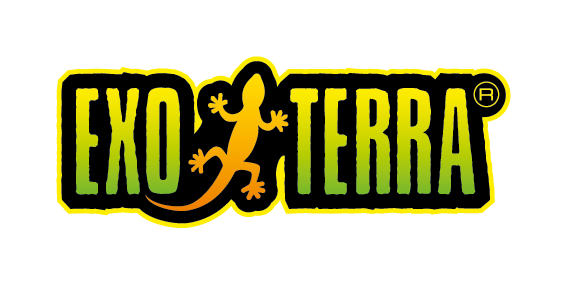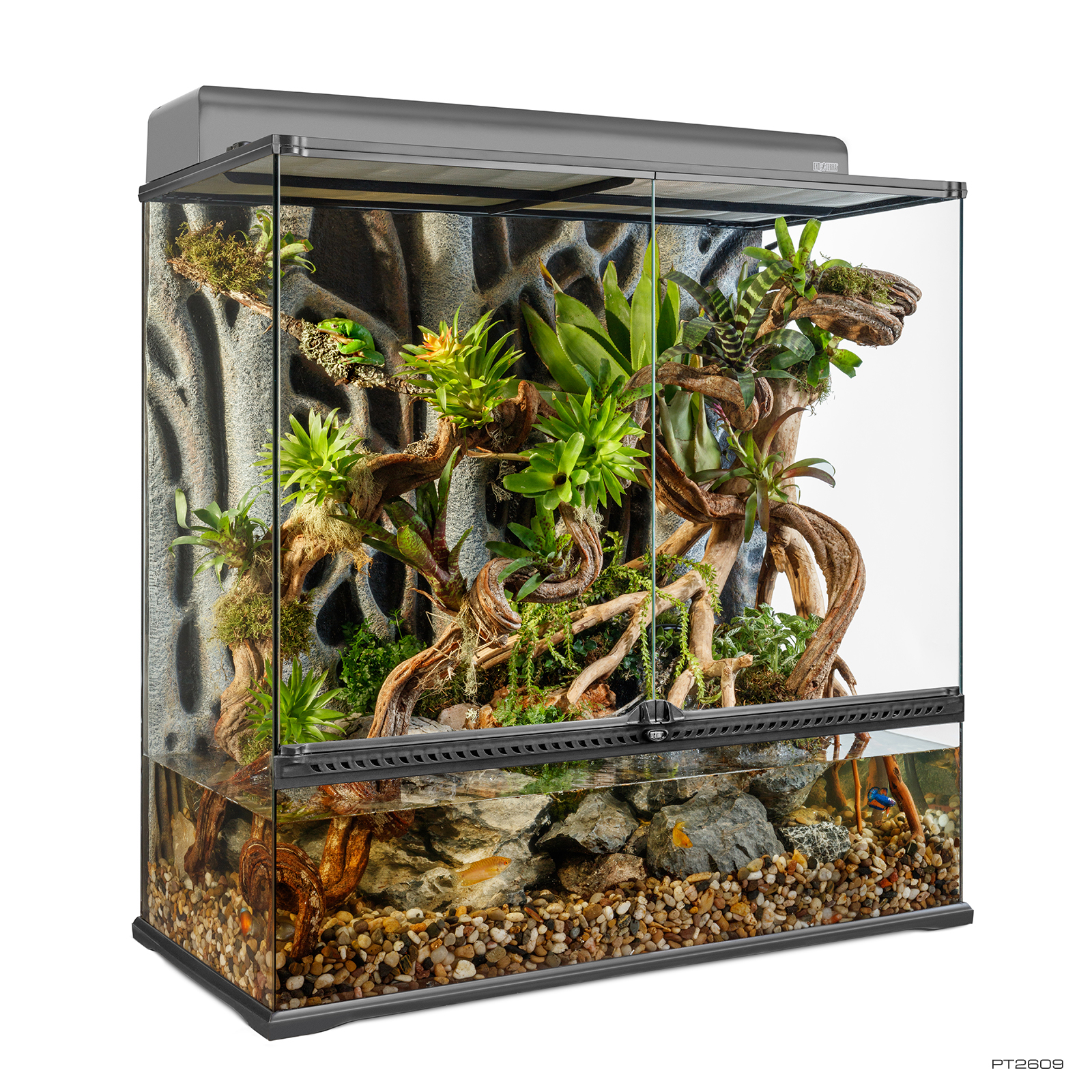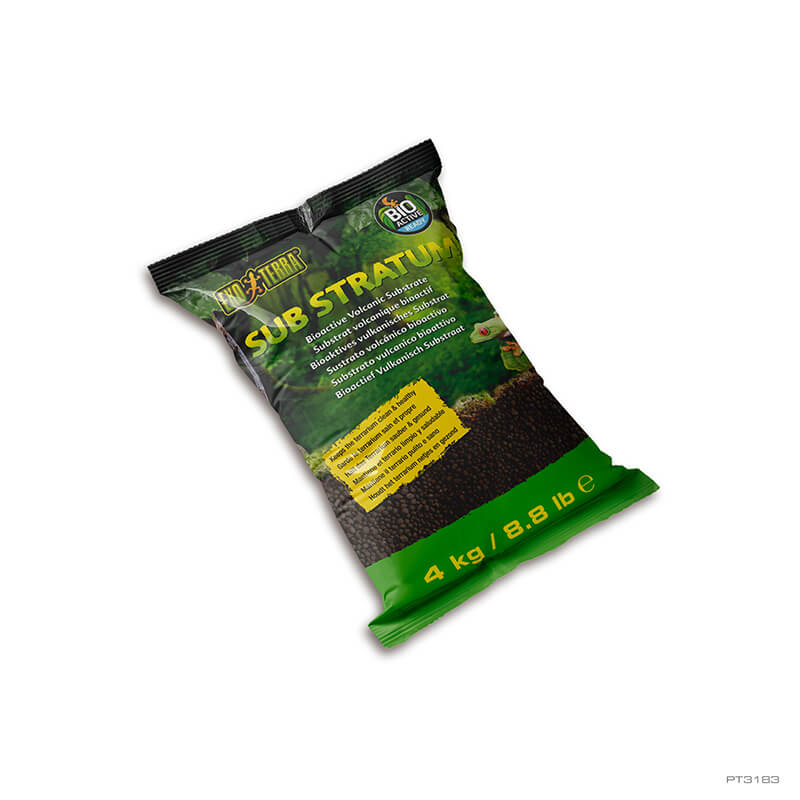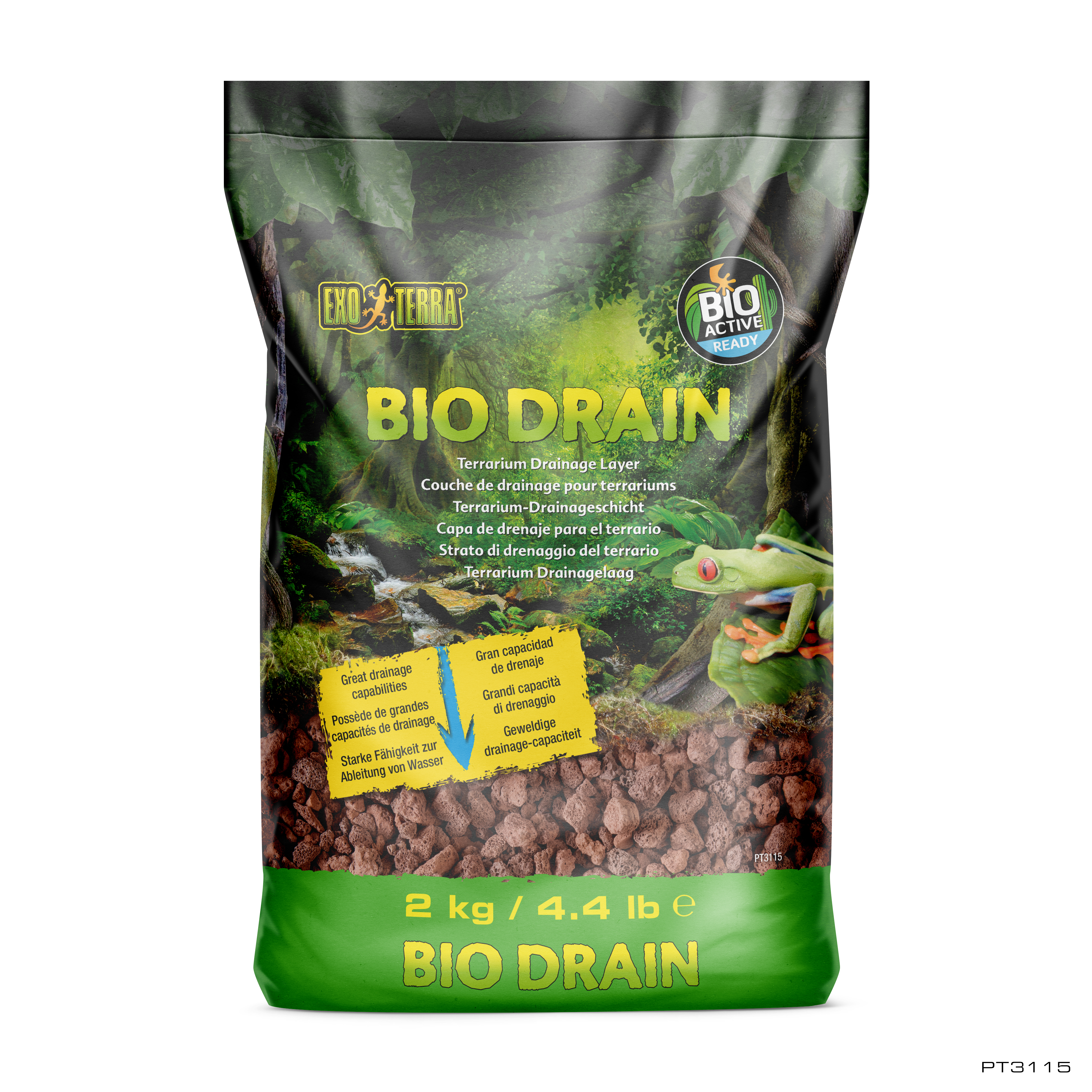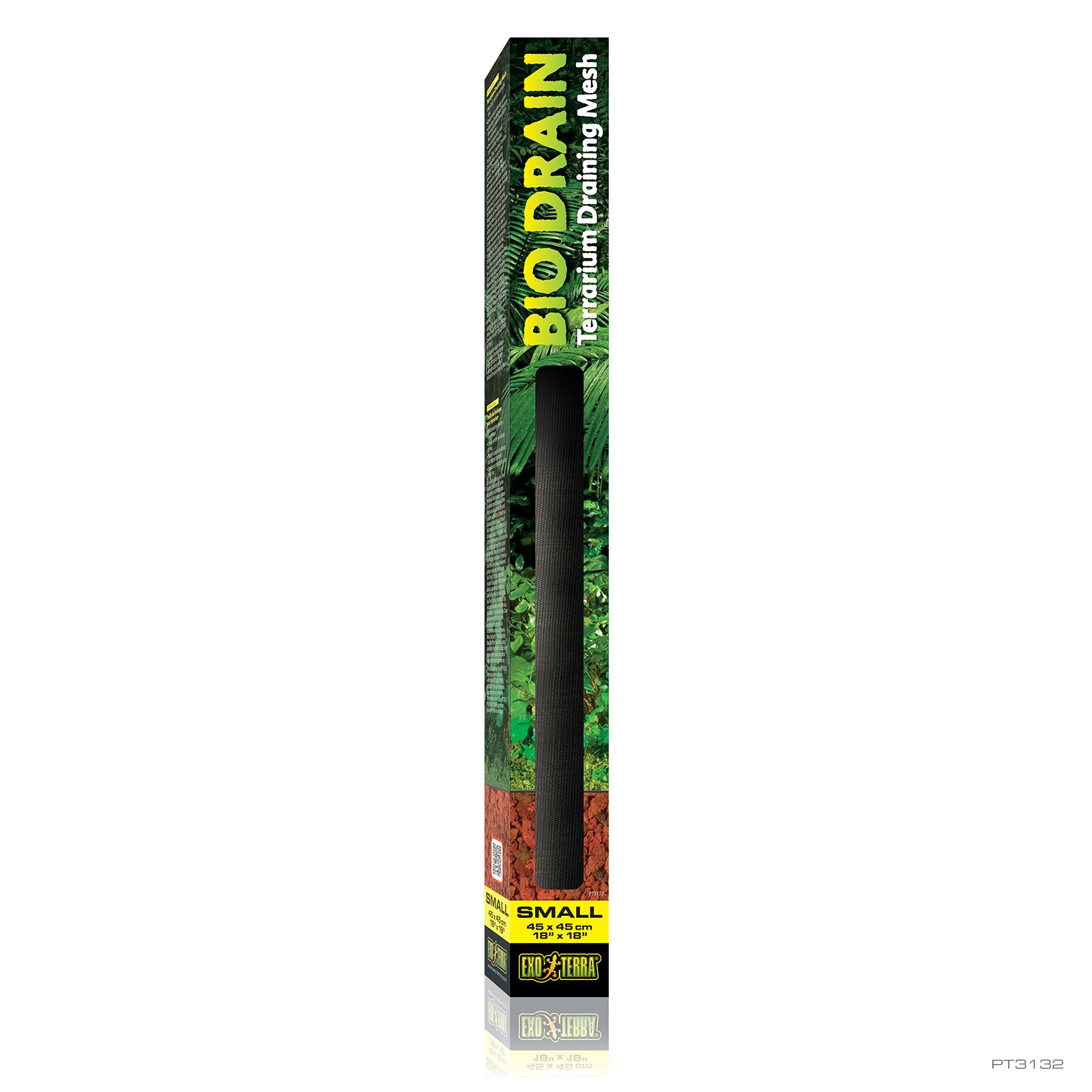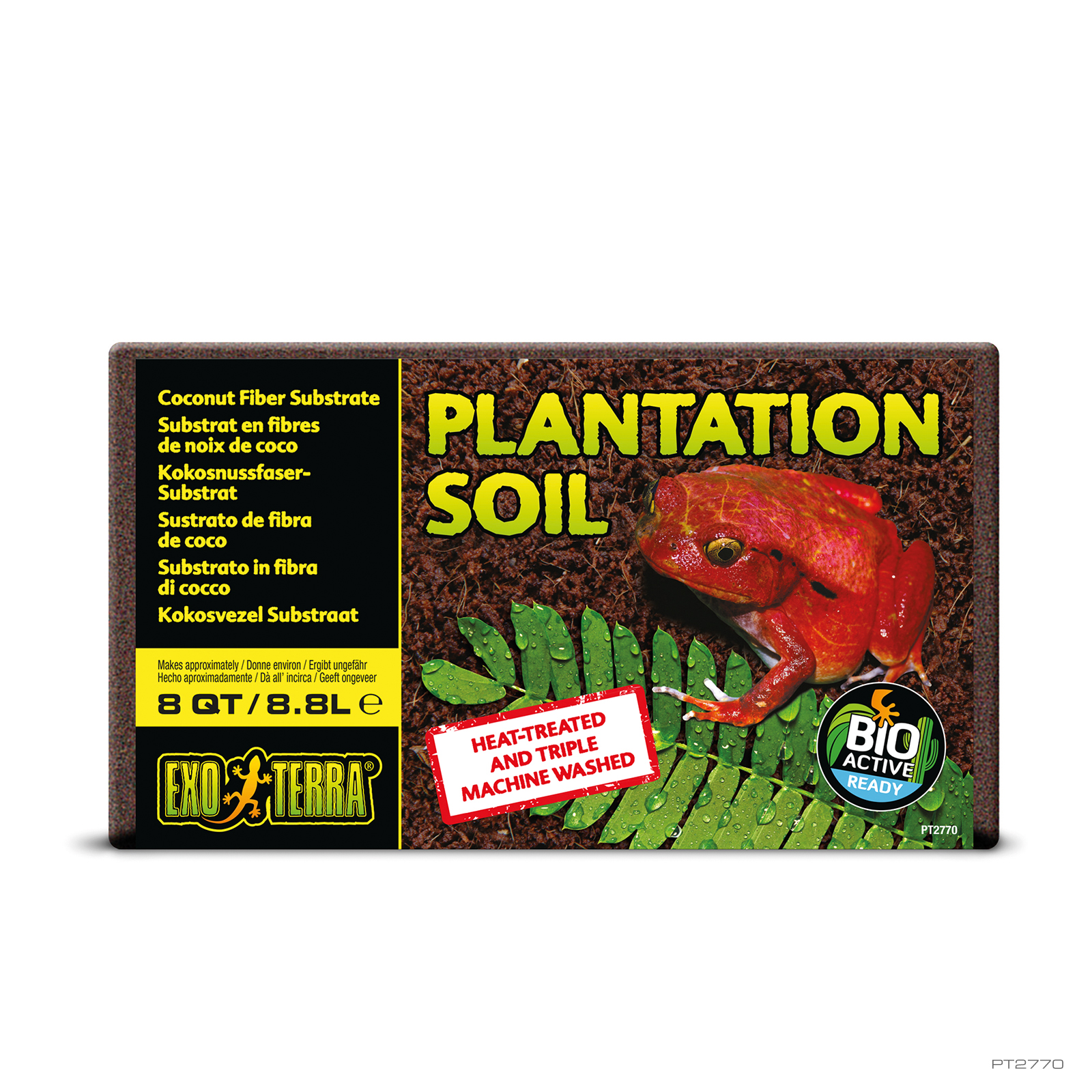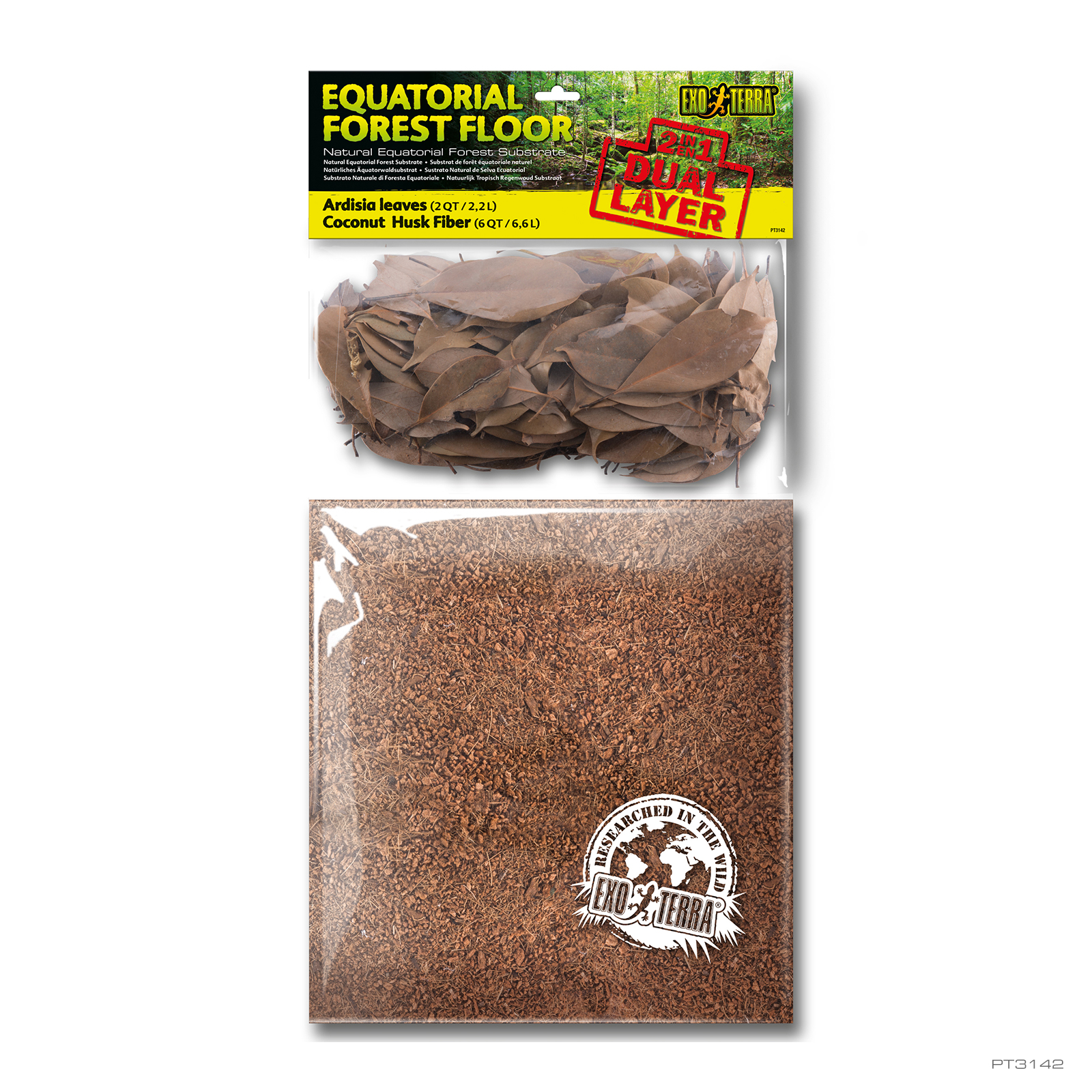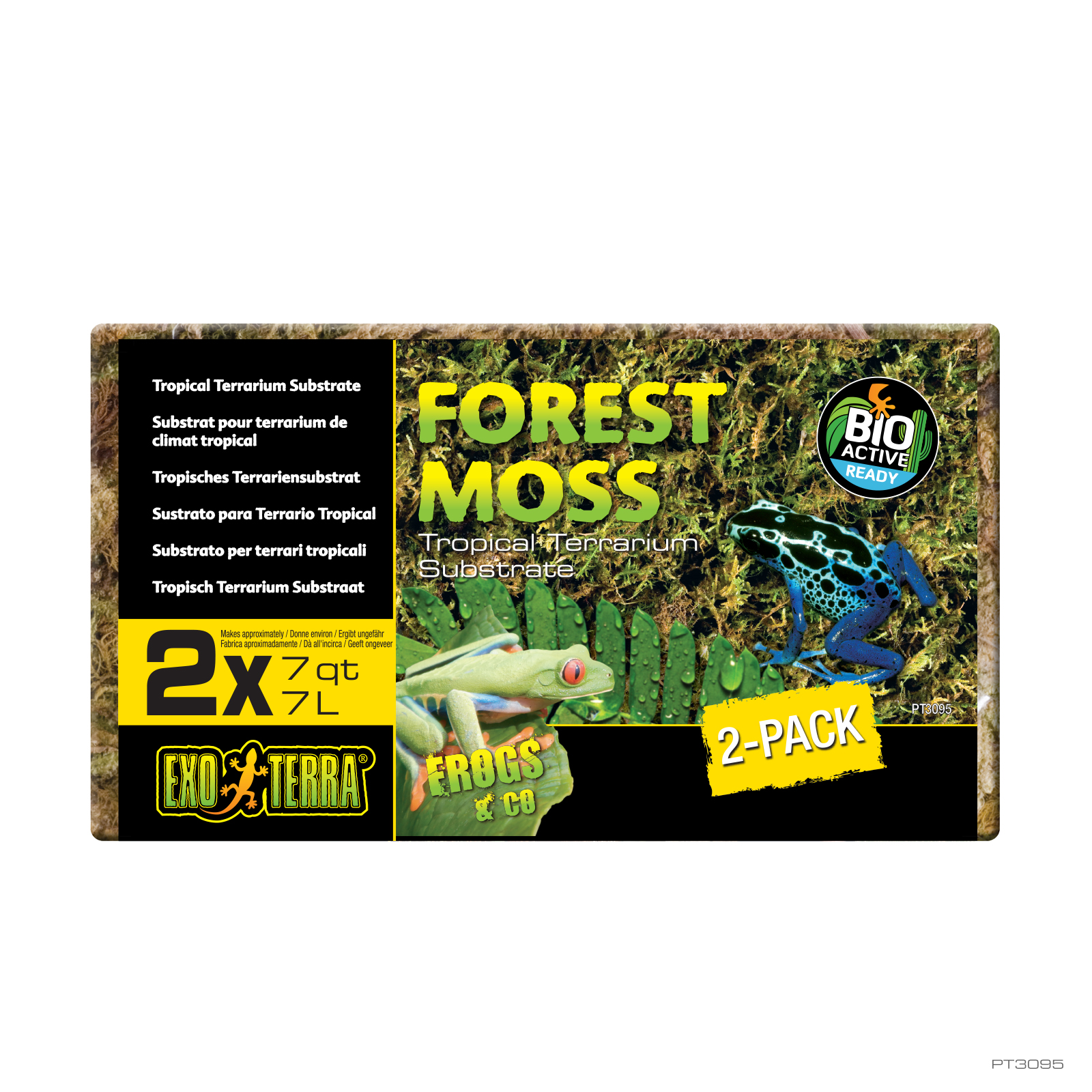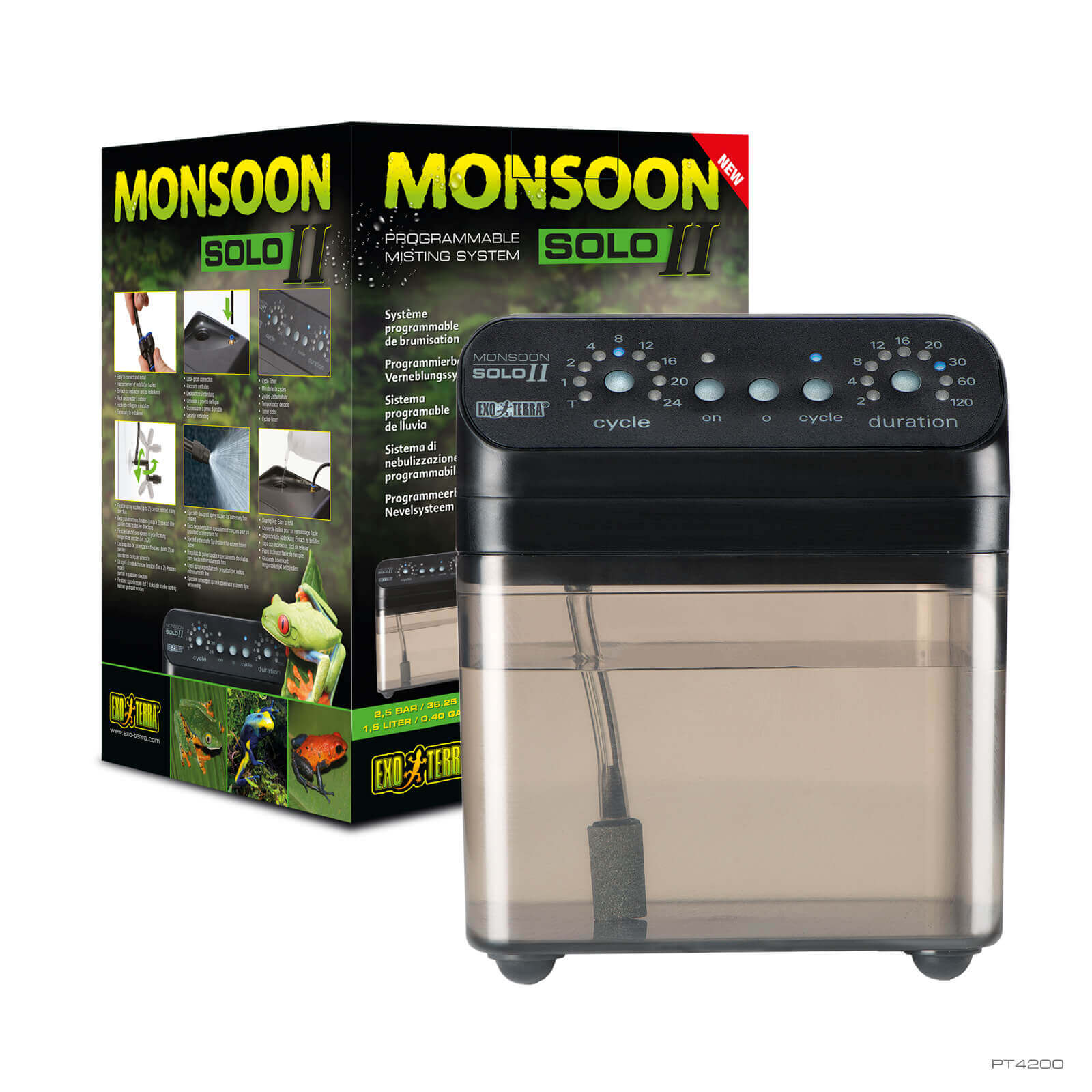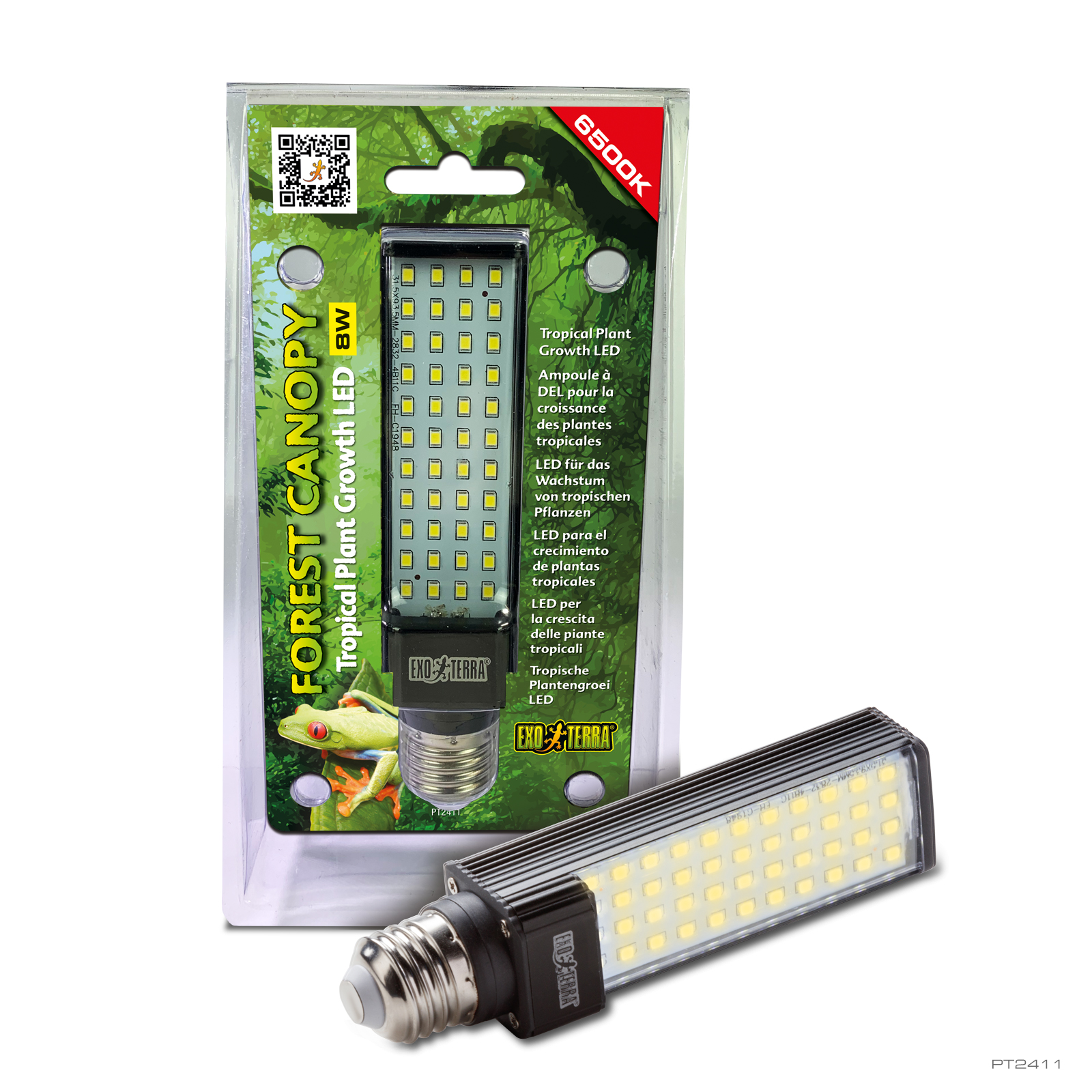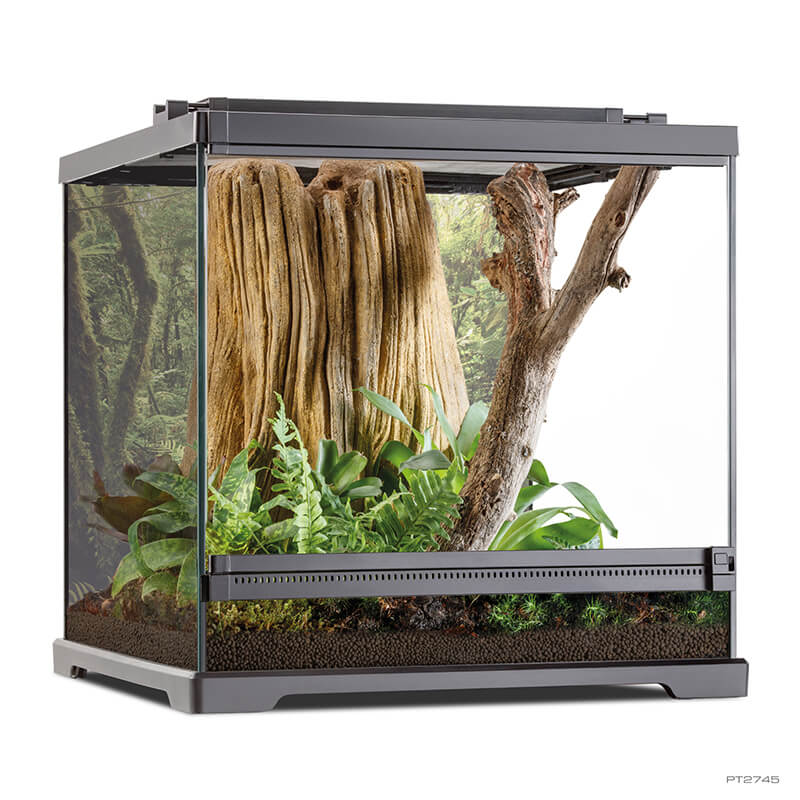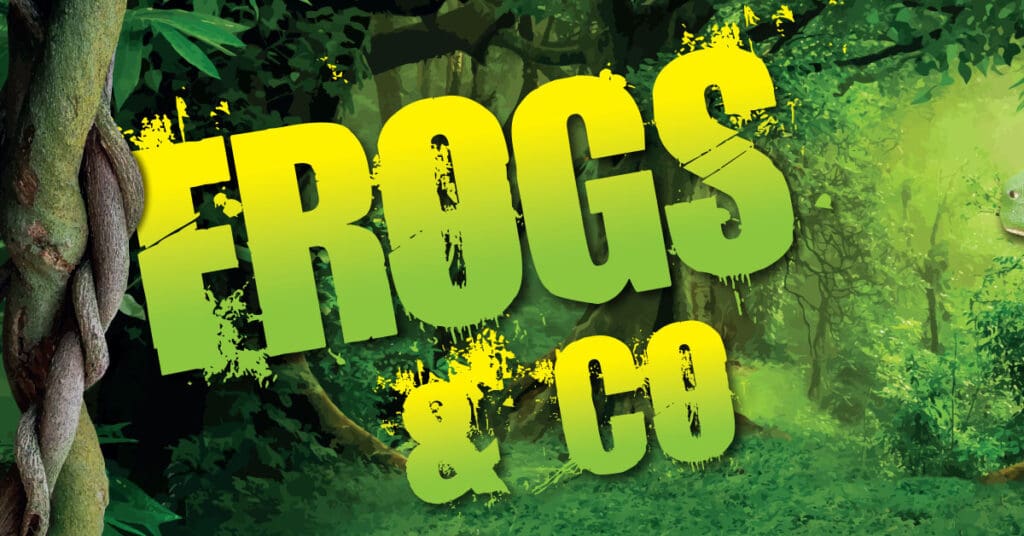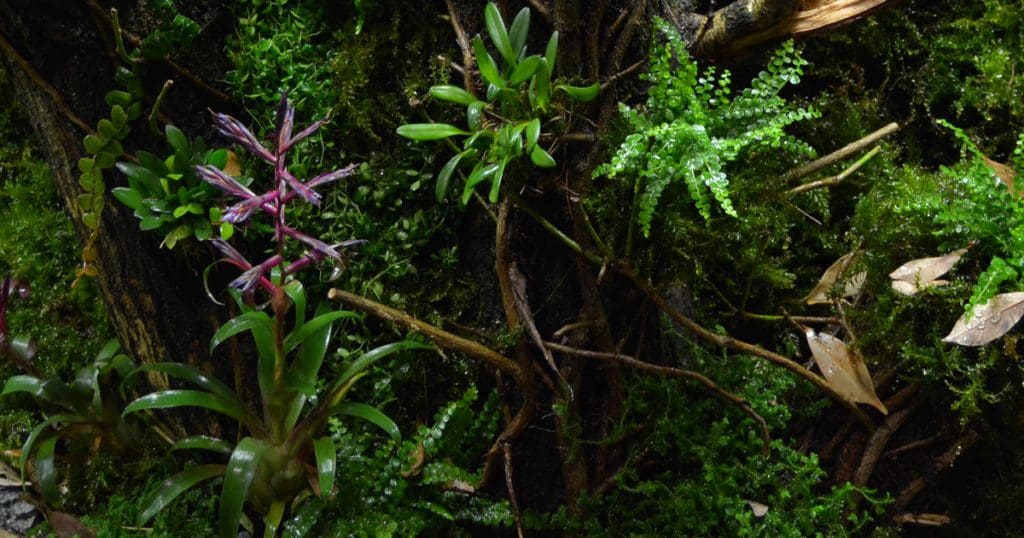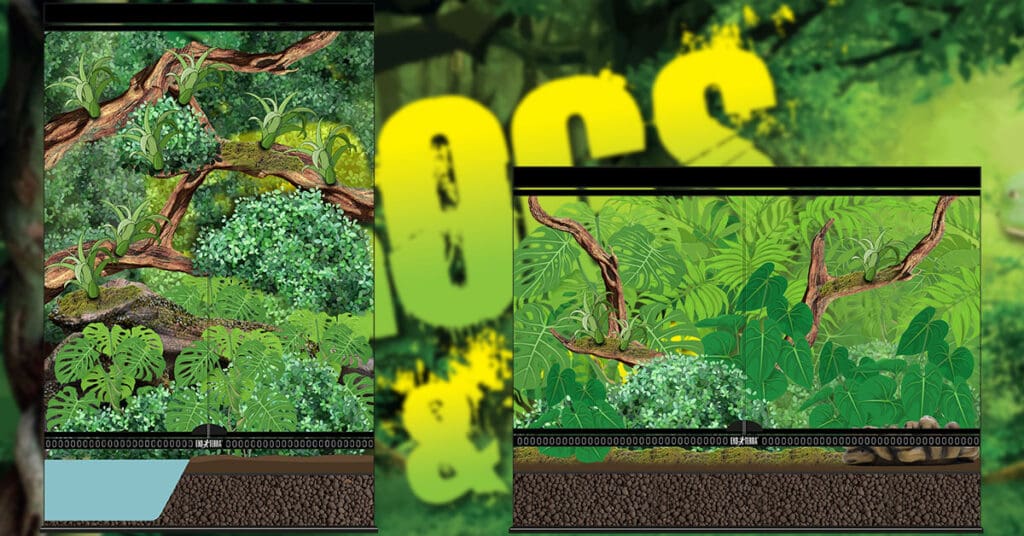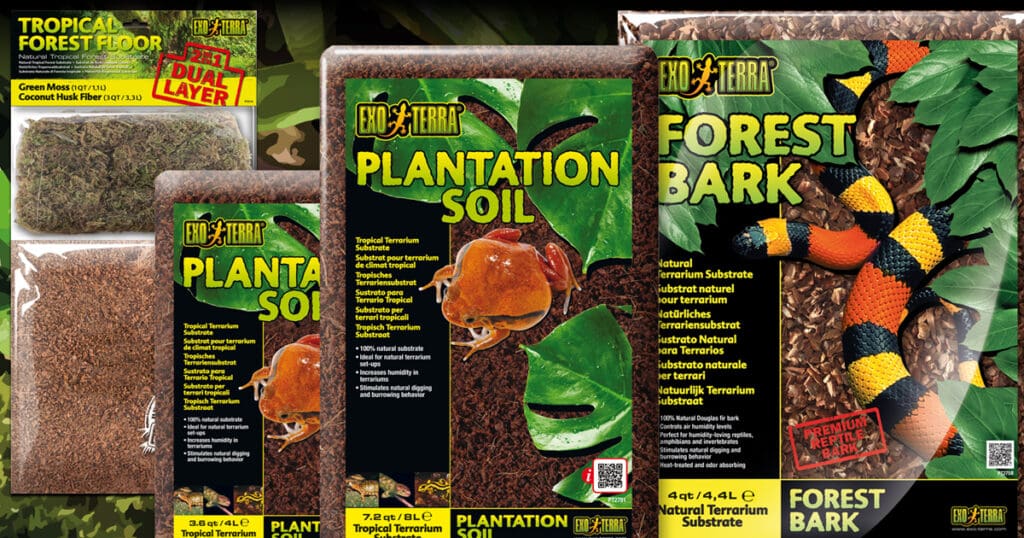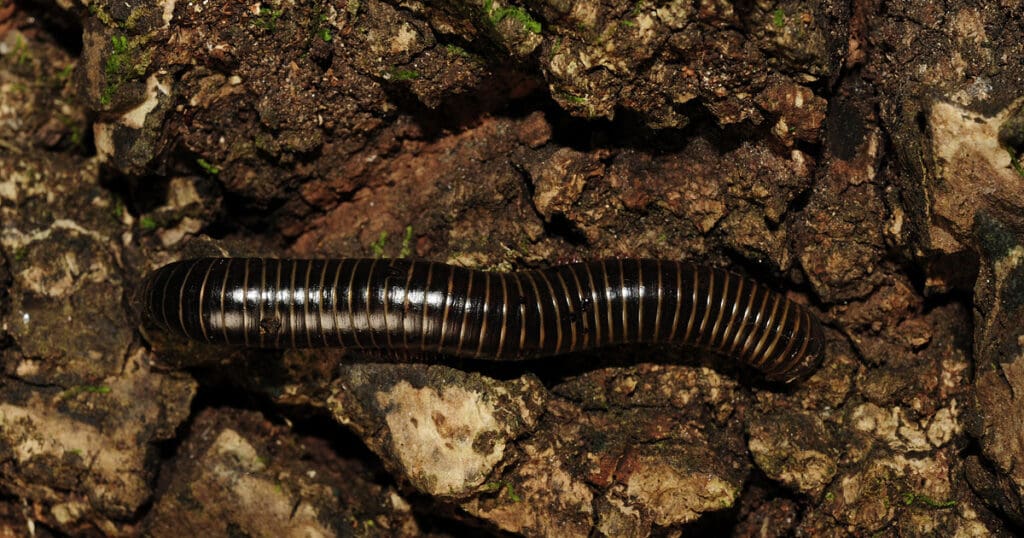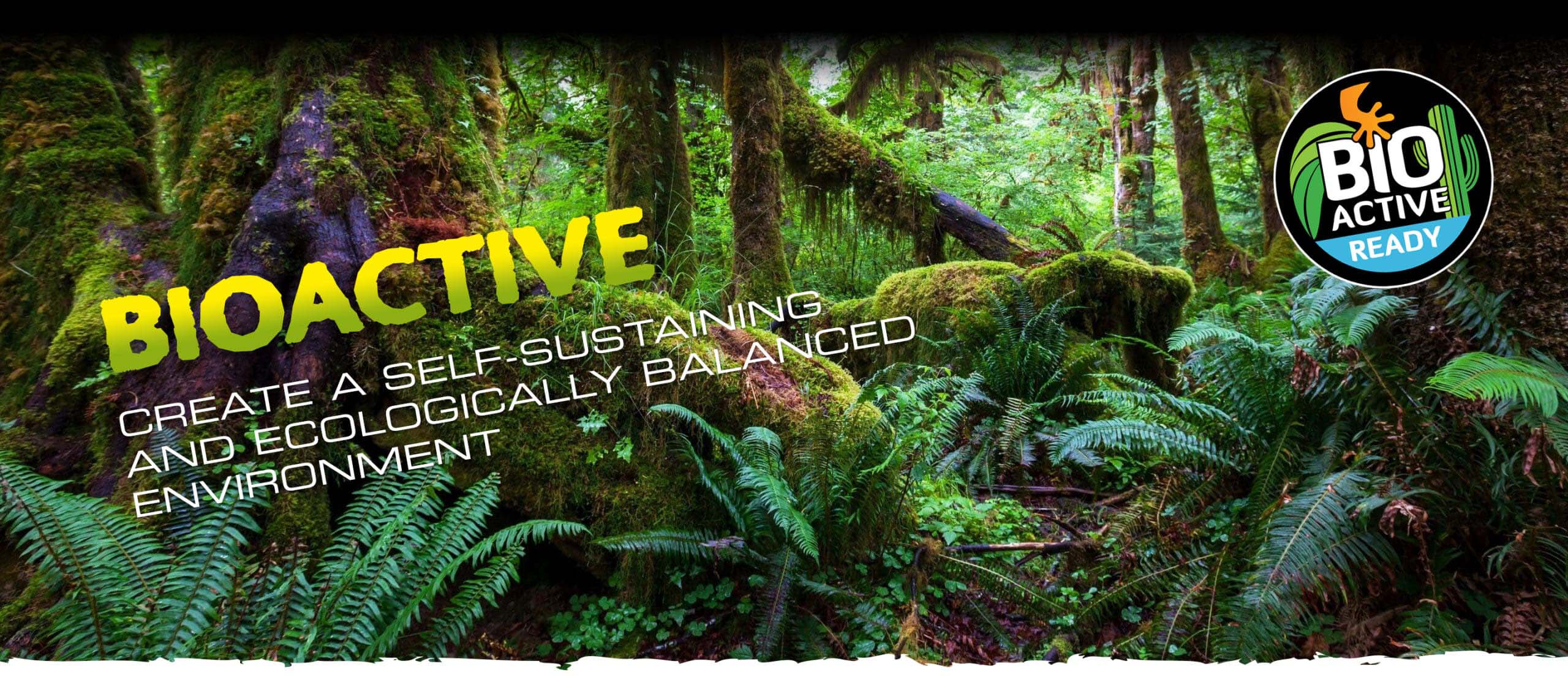
Bioactive
Emmanuel Van Heygen
We recognize nature’s profound beauty and complexity, and we’ve seen how the bioactive approach to terrariums brings that intricate balance into our homes and lives. This method centers on crafting a self-sustaining and ecologically sound environment where animals, plants, microorganisms, and substrates coexist harmoniously, each element nourishing and supporting the others.
In designing a bioactive terrarium, we strive to mirror the natural ecological processes and interactions in the wild, creating a stable and balanced habitat. Our terrariums become miniature ecosystems where reptiles, amphibians, plants, and invertebrates like springtails, isopods, and worms play unique roles. This diverse community contributes to the equilibrium and vitality of their shared space.
The essence of a bioactive terrarium lies in the natural process of decomposition. Organic matter, such as leaves or animal waste, becomes a feast for microorganisms, like bacteria and fungi, which break it down. The nutrients released are absorbed by the plants, fostering growth and forming a symbiotic relationship that supports the entire ecosystem.
We see the inherent benefits of this approach. Bioactive terrariums maintain a natural and aesthetically pleasing environment and bolster the well-being of the animals within. The presence of microorganisms in the soil aids in breaking down waste and averting the buildup of toxins, leading to a healthier habitat. While this can reduce the need for frequent cleaning, making bioactive terrariums relatively low maintenance, we always stress the importance of careful monitoring. Ensuring the balance of this delicate ecosystem sometimes requires attention to the specific needs of particular species.
Embracing the bioactive philosophy aligns perfectly with our mission to make reptiles feel at home. It’s an invitation to understand and appreciate the intricate dance of life, a dance we’re honoured to help you bring into your living room. By promoting a deeper connection with the natural world, we enable our fellow enthusiasts to create sanctuaries where every organism thrives and the beauty of nature is celebrated every day.


Emmanuel Van Heygen
“The essence of a bioactive terrarium lies in the natural process of decomposition. Organic matter such as leaves or animal waste becomes a feast for microorganisms, like bacteria and fungi, which then break it down.”
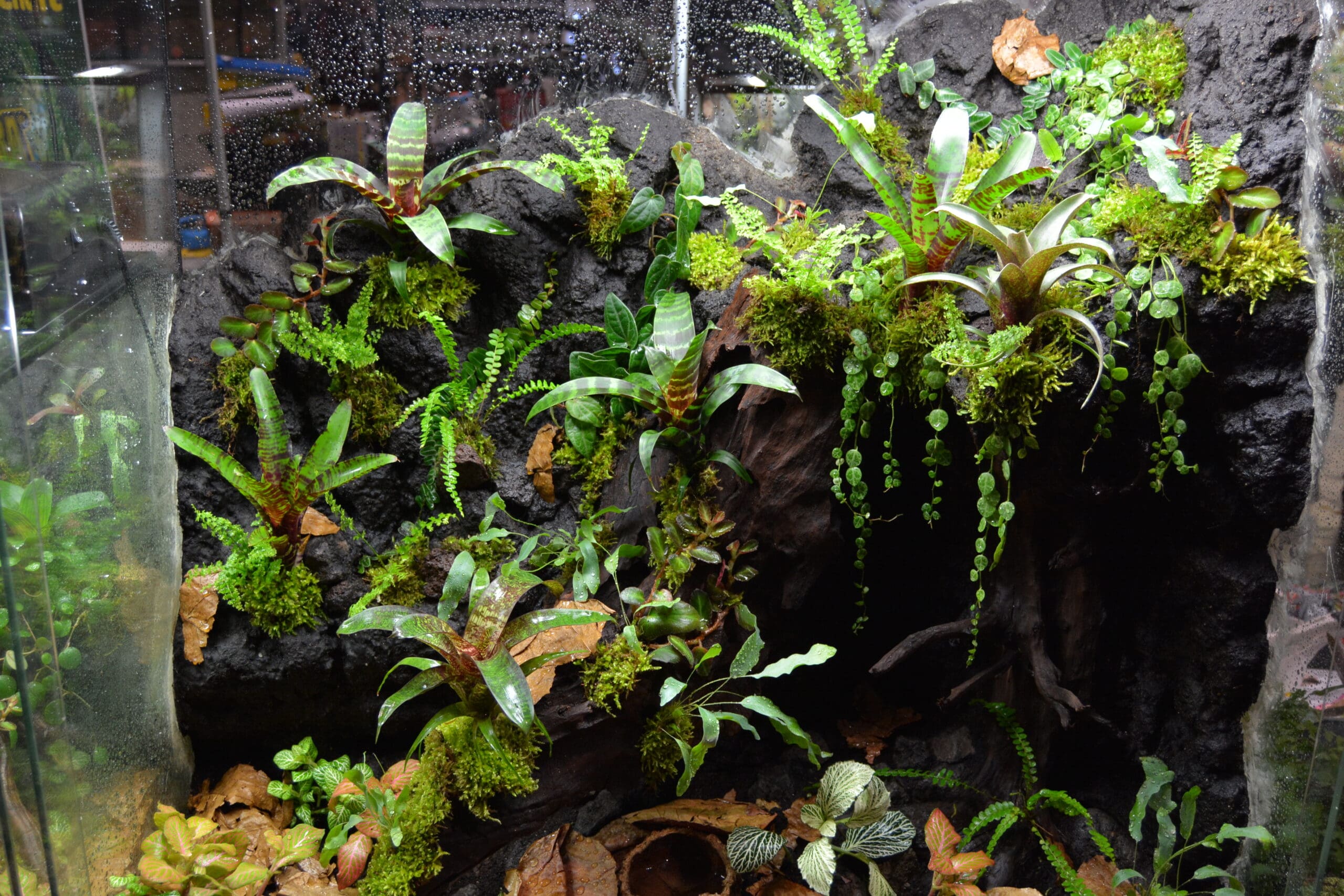

Bioactive terrarium
We view the creation of a bioactive terrarium as an art form that involves the careful integration of various components, each serving a specific and vital function. Understanding the synergy between these elements is critical to crafting a thriving and balanced ecosystem within your terrarium.
- Substrates: These are more than just the foundation of your terrarium. They are the soil from which life springs. Substrates are selected and prepared in a bioactive setup to provide the essential nutrients that plants require for growth. They play a pivotal role in the ecosystem, fostering healthy plant life that supports the other terrarium inhabitants.
- The Clean-up Crew: This assembly of microorganisms and small invertebrates, such as springtails and isopods, is nature’s recycling system. They break down biological waste, turning what might otherwise be harmful debris into beneficial nutrients. Their work helps maintain a clean and balanced environment, reducing the risk of toxins and supporting the overall health of the terrarium.
- Live Plants: Plants are a bioactive terrarium’s living, breathing decor. They do more than beautify the space; they provide shelter, retain moisture, and yield nutrients through decomposition. They create a more naturalistic habitat, mirroring the conditions reptiles and amphibians would encounter in the wild.
- Reptiles & Amphibians: These majestic creatures are the stars of the terrarium but are also integral to the ecosystem’s function. Their waste provides nutrients to the clean-up crew, promoting a continuous cycle of growth and decomposition. They are both beneficiaries of and contributors to the terrarium’s vibrant life.
A bioactive terrarium is more than a container; it’s a living, breathing world in miniature. The harmony between substrates, the clean-up crew, live plants, and reptiles & amphibians is a testament to nature’s wisdom and beauty. By facilitating this delicate balance, we aim to create spaces where nature is observed and participated in, where every element interacts harmoniously to support one another’s needs. We hope to bring you closer to the natural world and enable your reptiles and amphibians to feel at home truly.
Bioactive Topics
Frogs & Co
Frogs are almost everywhere on this planet. From the tropics to subarctic regionsThere are about 7,000 species – with the greatest diversity in the tropical rainforests. Recreating parts of these tropical rainforests is an art! The Exo Terra...
How to set up a bioactive terrarium
Setting up a bioactive terrarium can be a rewarding and sustainable way to keep certain types of reptiles, amphibians or invertebrates. The concept of a bioactive terrarium is to create a self-sustaining ecosystem where the animals live alongside various microorganisms that help maintain a natural balance.
Microhabitat Types For Frogs
While the stunning colors and studying the amazing behavior of frogs have always been the motive to keep these amazing animals in a terrarium, with the recent trend towards more natural, bioactive tropical terrariums, we see a steep increase...
Role of the substrate
In a bioactive terrarium, the substrate plays a crucial role in supporting the overall health and functioning of the ecosystem. The term "substrate" refers to the material or layer on the floor of the terrarium where plants, microorganisms, and invertebrates reside.
The Clean-up Crew
The clean-up crew consists of a group of small organisms that work together to break down organic matter, consume waste, and control the levels of debris and detritus in the terrarium. They contribute to the decomposition process, recycling nutrients back into the soil, which helps sustain the plants and other living organisms in the enclosure.
Stay up on all things exo terra.
"*" indicates required fields
